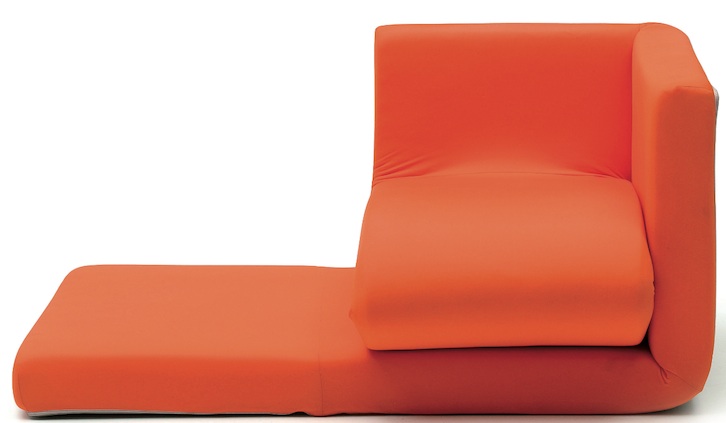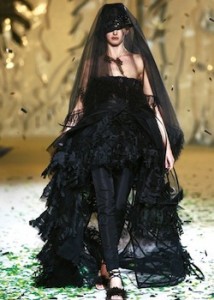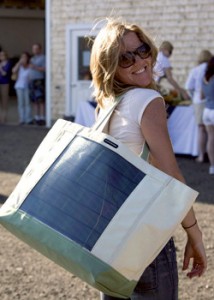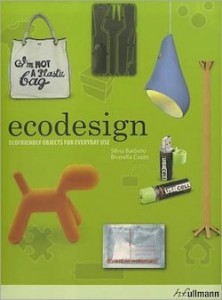Green is the new black. Everything old is new again, which is the underlying philosophy of ecodesign: the desire to provide attractive and sustainable solutions for the demands of modern societies.
Back in the Sixties and Seventies, the environmental movement motivated an entire generation of thinkers and activists to consider a more global perspective of the impact of industrial production upon the earth’s resources. Now, more than ever, the urgency of the need for eco-friendly design has been made manifest by the impact of global warming on quotidian life.
For the generation raised during an era of macramé planters, Earth shoes, homemade granola, and the “Whole Earth Catalog,” the so-called “green movement” embodied an almost flagrant disregard for what was considered conventionally attractive or stylish. Not so anymore.
Published by h.f. ullmann, the richly-illustrated “Ecodesign” by Silvia Barbero and Brunella Cozzo introduces readers to a dazzling array of contemporary objects that are as stylish as they are sustainable.
In short, being green doesn’t have to mean ugly. This trilingual (English, French, and German) book serves as a testament to the breadth of visionary design and innovative production processes that afford hope for the planet’s longevity while offering beauty within the home.
The book’s introductory chapters define ecodesign by providing ten practical approaches to sustainable design production, including size reduction, zero emissions, eco advertising, the use of bio-based and multi-use materials, sustainable technology, and disassembly design.
The modus operandi of ecodesign is that every product has a life cycle, from production to disposal. Ecodesign is the nexus between innovation and ecological responsibility.
In flipping through “Ecodesign,” one is reminded anew that the best ecodesign products adhere to the first principle of design: Form follows function. In short, the ecodesign products that function best are those that are flexible, multifunctional, and recyclable.
Divided into sections devoted to household appliances, furniture, light and energy, transportation, clothing and accessories, toys, packaging, and graphic design, the book’s 352 pages are a compendium of objects designed and produced in accordance with the principles of ecodesign. Over 350 products are included in “Ecodesign,” each with a detailed illustration and accompanying text.
Some of the products might be familiar to many citizens, such as the Dyson Airblade, an electric hand dryer and the USBCELL, a USB rechargeable battery. There’s also Bluetooth jewelry and headset, which any gadgethead knows as well as his right hand.
Other ecodesign products are less well-known. A Postaphone, for example, is an ultra-thin phone, so thin that it can be mailed inside a standard envelope. And Handpresso is a manual espresso maker that looks as if it provides a morning workout for the hands – and might be just the item one yearns for while hiking a national park.
For those who are into gardening, there’s the BioLogic, a washing machine with plants. Taking a cue from hydroponic marijuana growers, the designers behind BioLogic utilize hydroponic plants to filter the water released by the detergent, thereby avoiding the pollution of the waste water. Of course, as the authors acknowledge, “Washing speed takes a back seat to sustainable functionality.” In other words, you can watch flowers grow while your jeans get clean.
A wind-energy street lamp called Light Wind was inspired by the windmills of its Netherlands-based developer. The six-foot blades that top the lamp capture even the slightest breeze, transforming wind into light.
One can imagine Don Quixote and Sancho Panza gazing in amazement – and that’s precisely the quality evoked by flipping through this fascinating catalog of ecodesign. There’s hope for the future yet.
DETAILS:
Ecodesign: Ecofriendly Objects for Everyday Use
Authors: Silvia Barbero, Brunella Cozzo, Paola Tamborrini
Pages: 352
Format: 184 x 240 mm
Cover: flexibound with flaps
Available languages: trilingual INT-30 (GB/D/F)
Languages rights: all languages
ISBN: 978-3-8331-6308-1 (GB/D/F)
PRICE: $59.99







